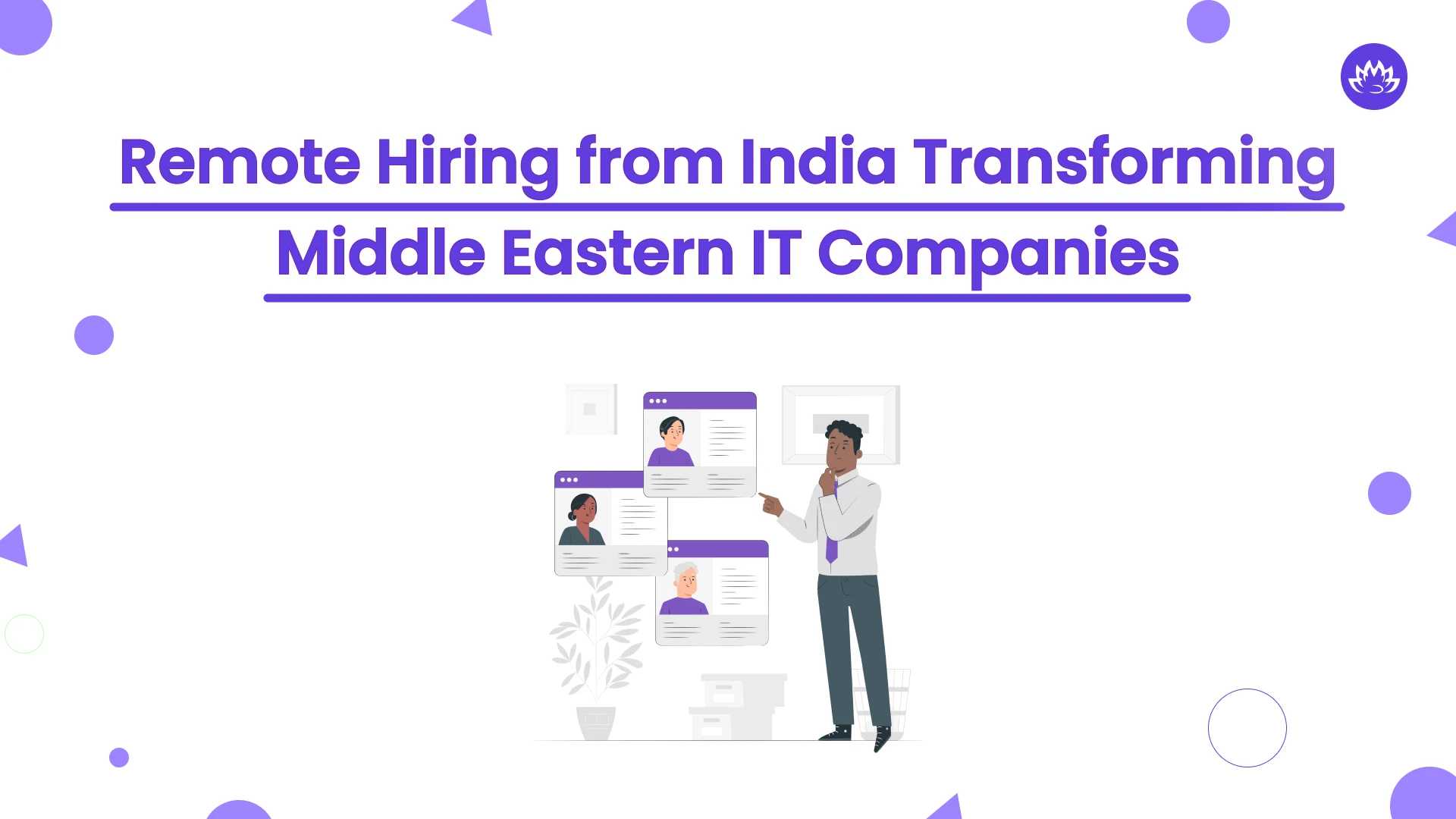Nothing can beat the power of the process. Be it nature that has a seasonal cycle or developing a high-end web application, you must understand how a good process brings the best results. This is a universal approach. Everything takes time and there is a defined process that keeps the tasks streamlined. Hence, you need a well-established process, that can be implemented while developing a web application. It starts with planning, knowing the application’s purpose, analyzing its complexities, choosing a suitable tech stack, finding various user options, testing, and deploying. Each step must be well-defined before beginning the web app development cycle.
As a leading web app development company, we are here with this blog to help beginners and developers who want to know how to build a web app from scratch. The guide will help you know how to develop a web application for your business and the steps involved.
What is a Web Application?
A web application is a software program, operating within a web browser. Web apps can be accessed through a web browser. They are dependent on multiple technologies like HTML, CSS, JavaScript, etc. to offer user interfaces and provide user functionalities. Web applications can be run on different devices and operating systems as they have cross-platform compatibility. Users just need an internet connection to access the web app from any device.
There are different types of web applications. They are classified between Single-Page Applications and Multi-page applications. Web applications are also categorized based on their nature of existence like dynamic apps, static apps, and Progressive Web apps (PWAs).
Some of the best examples of web apps are Gmail, Facebook, Google Docs, Spotify, Google Drive, Amazon, etc.
How do you develop a web application from Scratch?

Idea Research
Do extensive research about your target audience and the technology you want in your web application. The process will help you define your goals, understand your target audience and their needs, preferences, etc, and identify features. A well-done market research includes identifying competitors and analyzing their strengths and weaknesses. Moreover, you need to come up with a unique solution that can add value to the market and differentiate your web app from competitors.
Planning of Web App Project
At this stage, design an effective well-planned process to develop your web application. You must create your workflow and then begin with the process of designing. Defining roadmaps and resource allocation, setting realistic deadlines, and tracking milestones are the crucial steps in this phase.
Define MVP (Minimum Viable Product)
The third stage is to define your minimum viable product. This is the one of most crucial stages of the development process. Before creating a full-fledged web application, it is always recommended to create an MVP and put it to the test for the target audience. Building an MVP is advantageous in several ways as it focuses on delivering the core features to users. Further, based on the user’s feedback you can iteratively create a better product with an agile approach. Mostly, this step is followed by bootstrapped startups.
The scope of an MVP is defining the core problem that your web app will solve for the users, identifying key features that will help users fulfill their needs, and developing user stories for each feature from the user’s perspective, ensuring they align with the user’s needs.
Design UI/UX
Designing a powerful user interface (UI) and user experience (UX) that can appeal to the users is crucial. The first step is to create a wireframe or prototype of your web app containing the user interface and the flow of the app. Wireframing the web app gives a clear picture of how various components interact with each other. Some of the key aspects involved while designing the UI of your web app are:
Design UI/UX
Users should be able to navigate your web app seamlessly. Avoid cluttered interfaces and keep them simple and easy to interpret. You can use icons, clear labels, and menus to guide users.
Responsiveness
Your web app must be responsive and have different screen sizes for different devices, providing seamless user experiences.
Consistency
Ensure to maintain a consistent design across your web app, with similar color themes, layout, and typography. All the pages should have a common theme to provide a cohesive user experience.
Feedback and Confirmation
You can use visual or auditory cues to confirm the completion of any action. This reduces user uncertainty and gives a sense of control.
Visual hierarchy
Applying visual cues like color, size, contrasts, etc helps identify specific elements that you want your users to understand and implement.
Aligning User Persona
Your UI design must align with the user persona defining their preferences, culture, personality, habits, etc. to create user-centric designs.
Onboarding users
Providing an effortless user onboarding process for new users is the first step in marking good impressions. For this, you can provide tutorials and guidance in easy-to-understand UI, explaining key features with simple elements and forms during the onboarding phase.
Handling errors
To handle errors it is always advisable to design clear and user-friendly error-handling messages. This is useful when users encounter errors they can easily look for guidance and resolve the issue.
Using Whitespaces
Effective use of whitespace can improve readability and avoid visual clutter. Well-spaced elements show a clean and organized layout, making it easy to focus on necessary content.
Define MVP (Minimum Viable Product)
After finalizing the User interface and user experience, begin with building the front end of your web app. The front-end development involves CSS, HTML, and JavaScript. HTML is the foundation of your web app. Using semantic HTML tags can organize your content and give a perfect structure with defined sections.
With CSS, you can stylize your web app and make it visually appealing. JavaScript makes your web app livelier, interactive, and dynamic with multiple features. Of all the front-end frameworks, Angular, React, and Vue.js are the best frameworks for web development. All these frameworks have pre-built components and libraries to help streamline your development process.
Create Back-end of Web App
The next stage is to build a robust back-end of your web application. The backend includes server-side logic handling and database communication. The main stages of developing the back end of a web app are:
Server Setup
To host your web app, you need to set up a server by using cloud platforms like Google Cloud, AWS, or Microsoft Azure. Further, configure the server for incoming requests and route them to the specific web app parts.
Implementation of business logic
This step involves writing code and creating a form of design to handle the core functionality of your web app. The main stages here are user input processing, performing calculations, and database interaction.
Database connectivity
Selecting the appropriate database for your web app and establishing a connection is an important decision you need to make here. This ensures your data is effectively stored. Some of the most commonly chosen databases are MySQL, PostgreSQL, or NoSQL databases like MongoDB.
Testing and Debugging
Thorough testing and debugging of your web app is crucial and ensures all the functions run well free from bugs and errors. The popular techniques that can be seamlessly applied are:
Unit testing
Each component and module of the web app is tested here, ensuring they work with the flow. Frameworks like Jest or Mocha are used for the automation testing process.
Integration testing
Various components of your web app interact with each other, enabling the testing of seamless data flow between front-end and back-end in a correct manner.
User Acceptance testing
You can test your product by inviting a group of users to use your web app and provide feedback. With this, you can identify necessary improvements and usability issues.
Debugging is a part of the testing process that helps identify and fix errors or issues. You can use the best tools and techniques to find out the sources of errors and try to resolve them.
Deploy and Launch Web App
The next phase is deploying and launching your web app. Make sure you implement this only after obtaining satisfactory results from the testing and debugging phase. Web app deployment is done by implementing the following steps:
Find a hosting provider
Find a hosting provider according to your budget and requirements. You can use popular options like AWS, Google Cloud, etc.
Domain set up
Setting up a domain involves initial registration of your web app and configuration of it to the hosting provider. With this, users can access your web app with a memorable URL.
Web app deployment
Deploy your web app by following the hosting provider’s instructions which include uploading web app files, configuring server settings, and establishing SSL certificates for secure communication.
Monitor and optimize performance
Monitoring your web app regularly helps optimize speed and efficiency. Google Analytics is an effective tool that helps you track user behavior and identity bottleneck issues.
Maintain and Update the Web App
Web app maintenance and update assures success and improves your web app efficiency. The main tasks involved here are:
-
Regularly monitor web apps to track performance issues and security threats.
-
Update libraries and frameworks to ensure web app security
-
Encourage users to provide feedback on your web app.
-
Address reported bugs or issues and regularly release bug fixes and updates for smooth web app functionality
-
Keep adding new features to maintain your web app's vitality and increase user engagement.
-
Analyse user behavior and market trends for potential enhancements.
Conclusion
We hope the blog will help you know how to build a web application from scratch with nil experience. If you want to hire dedicated developers for your web application development project, partner with Whitelotus Corporation. We build best-in-class websites for various businesses.
Whitelotus Corporation is a leading web app development company, that delivers robust mobile and web applications. You can hire dedicated developers from Whitelotus Corporation to build small and large-scale web applications. We know how to harness the tools and functionalities of various technologies to create the best solutions that will meet your expectations.
Author
-

Sunil is a result-orientated Chief Technology Officer with over a decade of deep technical experience delivering solutions to startups, entrepreneurs, and enterprises across the globe. Have led large-scale projects in mobile and web applications using technologies such as React Native, Flutter, Laravel, MEAN and MERN stack development.
View all posts











